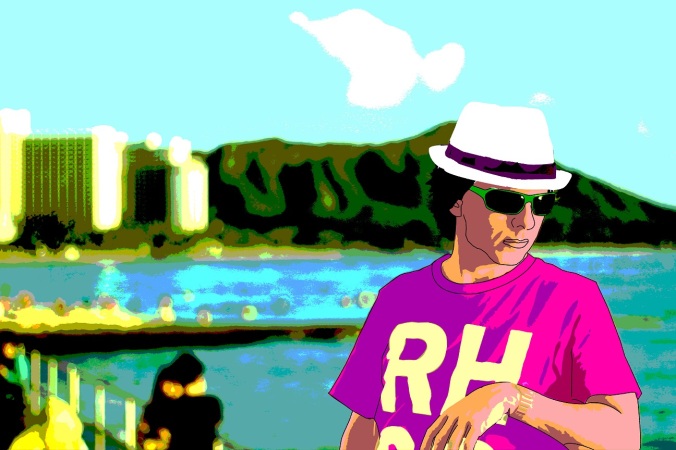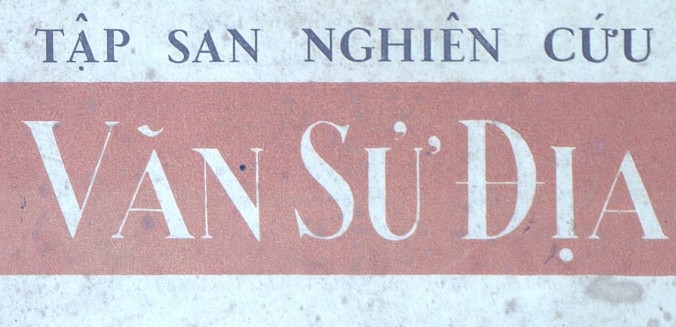
Le Minh Khai is the alter ego of me – Liam Kelley. I’m an Associate Professor of History at the University of Hawai’i at Manoa and am currently an Associate Professor of Southeast Asian Studies at the Institute of Asian Studies at Universiti Brunei Darussalam. The name that I use on my publications is Liam C. Kelley.
When you work as an academic, there is a lot of stuff that you learn that never makes it into your publications. So my initial idea for this blog was to use it as a space to share information and insights that I come across while researching and teaching.
Prior to the invention of the Internet, the main way that not-published information was shared was through actual human interactions. In other words, it was only when a student talked with a professor, or academics talked with each other at conferences, that the unpublished ideas/knowledge in someone’s head was shared.
As I see it, that’s an incredibly inefficient use of human knowledge. Scholars have all of these ideas/insights in their heads. . . but if that knowledge only gets shared through their limited number of publications (each of which can take years to make it into print) and through their limited number of conversations (After all, how many students ever go to a professor’s office hours?). . . then there must be a ton of information in the heads of scholars around the world that people never know about.
So it struck me that it would be much better just to put ideas “out there” for anyone to find whenever they needed them. So that is why I started this blog. I wasn’t sure if anyone would read it, but I felt that it was better to put the information that I had in my head (insignificant though it may be) “out there” rather than to just leave it in my brain.

And indeed, at the beginning there were not many readers, but eventually the readership started to increase, and given that the main focus of my research is on (premodern) Vietnamese history, it is not surprising that Vietnamese from Vietnam and overseas Vietnamese started to read this blog.
That, however, presented a bit of a problem, because for much of the twentieth century (and especially from the 1950s to the 1990s) writings about Vietnamese history were extremely politicized. Whether it be writings from historians in North Vietnam, or the writings of anti-war scholars in the West, or writings of scholars in South Vietnam and then from the diaspora, one can find biases in many of these works.
Meanwhile, I am a member of a generation that has aspired to ignore the political positions of the preceding generations, and has sought to gain the linguistic and intellectual skills to examine the past, and to try to do so as objectively as possible.
Therefore, what I see in the Vietnamese past is at times very different from what has been written and taught about that same past, be it in Vietnam, America, France or anywhere.
This difference has led to various reactions. Some readers have gotten angry, while others have become inspired.

What I find inspiring, however, is simply the fact that communication is taking place. If I had been born a few decades earlier, my life as an historian would have been lived largely in silence and isolation. But now thanks to the Internet, it is possible to communicate with individuals from around the globe. That’s wonderful.
That also pushes me to think more deeply about what the world is like and what communication in the world today is like.
As I see it, the digital revolution that is taking place around us is of course making communication easier, but it is also making it more visual and aesthetic. It is getting easier and easier for anyone to create appealing images, videos, graphics, etc. That then raises the standard of what “knowledge consumers” expect.
Meanwhile, academics continue to write black text that gets printed on white pages. . . and read by few, while the potential for reaching a much larger audience exists on the Internet and on YouTube.

As such, I strongly believe that the academic world needs to undergo a “visual/aesthetic/graphic design revolution.” And that’s something that I’m attempting to experiment with here. Yes, some of the videos I make may seem ridiculous to some, and some of the images I create may not make sense to others, but I’m completely convinced that there is great power in combining ideas with images and aesthetics (and not just to make things look good, but to use imagery to add additional layers of meaning), and I’m trying to experiment here with what is possible.
And while some people might argue that “academics” is above “aesthetics”. . . just look at the journal cover (above) from North Vietnam in the 1950s: Does that not combine ideas with visual aesthetics?! This has always been important, but it is getting increasingly important as digital tools make it possible for everyone to present ideas in visually and aesthetically appealing ways.
[For more on the need for academics to adapt to the digital age, see the pop-up blog that I created: Content Asian Studies.]
Finally, I realize that I have focused (too) heavily on Vietnam lately. I hope to get back to posting on other areas of Southeast Asia soon.
Thank you for reading!!
Le Minh Khai/Liam C. Kelley, January 2017.
You can contact me at leminhkhai@hotmail.com
![]() Le Minh Khai is also on Facebook.
Le Minh Khai is also on Facebook.
![]() Follow us on Twitter @LeMinhKhai.
Follow us on Twitter @LeMinhKhai.
And on Academia.edu
And now (2018) I have set up a Researchgate page as well
Some of the posts about Vietnam on this blog have been translated and can be found here.
![]() See also the Le Minh Khai YouTube Channel.
See also the Le Minh Khai YouTube Channel.
If you want to know even more about what this blog is about, I guess you can still read this.